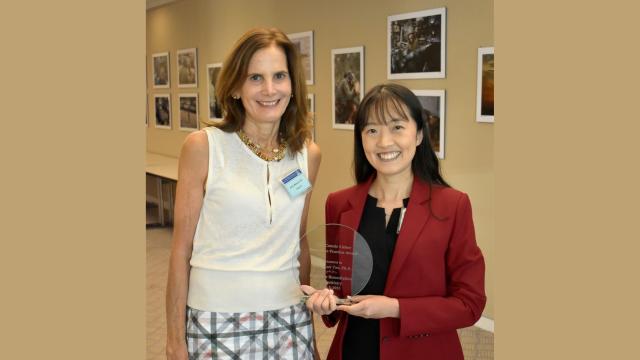The study of Interior Design is much more than designing for just aesthetic appearances. Interior design has to consider a confluence of factors such as how spaces work, how they deliver a message and how individuals move around spaces and interact with objects or people. It is a direct study of the relationship between an environment and how that environment affects the behavior of its inhabitants.
So what do Chengal Pasir trees and a Peranakan tea ceremony have to do with hotel room design? Two SIT Interior Design students mooted their interpretation of Singapore-inspired hospitality for the ‘Made-in-Singapore Room Campaign’ and got their winning design concepts turned into reality.
Initiated by Far East Hospitality (FEH), one of Singapore’s leading operators of hotels and serviced residences, the campaign aims to connect travellers with Singapore’s varied culture, history and heritage. FEH collaborated with young budding talents from SIT and the Nanyang Academy of Fine Arts (NAFA) to design a Made-in-Singapore room for four hotels – Village Hotel Albert Court, Village Hotel Bugis, Village Hotel Changi, and Village Hotel Katong.
Students drew inspiration from a variety of sources such as cultural landmarks in the hotels’ vicinity, and their locations’ history and heritage. In March 2018, Far East Hospitality took inspiration from the four winning concepts and worked with its in-house design team to construct these rooms, which reflect the multi-racial culture, heritage and history of Singapore.
We spoke to the two winners – Felyna Chia and Kingsley Koh, both reading Bachelor of Arts (Hons) in Interior Design at The Glasgow School of Arts (GSA) in partnership with SIT, to understand their design rationale. Both Felyna and Kingsley were supported in their creative journeys by Oh Jun Yi, a 3rd year SIT Hospitality Business student. Jun Yi, with her training in marketing and hotel management, provided insights about travellers and hotel operations to the design students. The inter-disciplinary collaboration between interior design and hospitality business students has definitely helped sharpen the design sensibility of SITizens and broaden their awareness of consumer needs.

Felyna (seated in white, 2nd from left) and Kingsley (standing, 1st from right) with SIT interior design students who participated in the ‘Made-in-Singapore Room Campaign’. With them was Assistant Professor Agnes Xue (seated in red, 2nd from right).
CHENGAL PASIR for Village Hotel Changi by Felyna Chia
 Q: Please share your thoughts/feelings about winning this project.
Q: Please share your thoughts/feelings about winning this project.
Felyna: I am elated as it was the first design competition I have won! As it was my first time designing a hotel room, I faced many challenges throughout the designing process, and one of them was to cater to different needs of guests.
Q: What inspired you to come up with this design?
Felyna: I looked into the history of Changi Village and learned about the abundance of Chengal Pasir trees. These trees are amongst the tallest in this area and they ‘grew’ up with the village. Hence, I wanted the hotel room ambience to reflect the natural heritage of Changi’s yesteryears.
Q: What is the impression you hope to leave on Singaporeans and tourists alike when they stay in the room retrofitted with your design?
Felyna: I want the room guests to appreciate the natural laid-back ambience of Changi that is away from the usual hustle and bustle of Singapore.

Artist impression of CHENGAL PASIR by Felyna Chia

The constructed CHENGAL PASIR room at Village Hotel Changi.
TUANG TEH for Village Hotel Katong by Kingsley Koh
 Q: Please share your thoughts/feelings about winning this project.
Q: Please share your thoughts/feelings about winning this project.
Kingsley: I am thankful for this unique opportunity to challenge myself and widen my knowledge on the hospitality industry. I am ecstatic and glad that all the sleepless nights have paid off.
Q: What inspired you to come up with this design?
Kingsley: Through my research, I learnt that the Peranakan culture is an integral part of Katong, and that Peranakans take a lot of pride in their cultural activities. One such activity is the Tuang Teh tea ceremony, which I hope more people can learn to appreciate.
Q: What is the impression you hope to leave on Singaporeans and tourists alike when they stay in the room retrofitted with your design?
Kingsley: Design is more than just aesthetics, colour and embroidery. Through Tuang Teh, I wanted both tourists and Singaporeans to take away a slice of the Peranakan way of life, which adds to the melting-pot culture of Singapore.

Artist impression of TUANG TEH by Kingsley Koh

The constructed TUANG TEH room at Village Hotel Katong.
Congratulations to these SITizens for doing SIT proud in this competition and injecting a unique local flavour in the hospitality scene!
![[FA] SIT One SITizen Alumni Initiative_Web banner_1244px x 688px.jpg](/sites/default/files/2024-12/%5BFA%5D%20%20SIT%20One%20SITizen%20Alumni%20Initiative_Web%20banner_1244px%20x%20688px.jpg)


